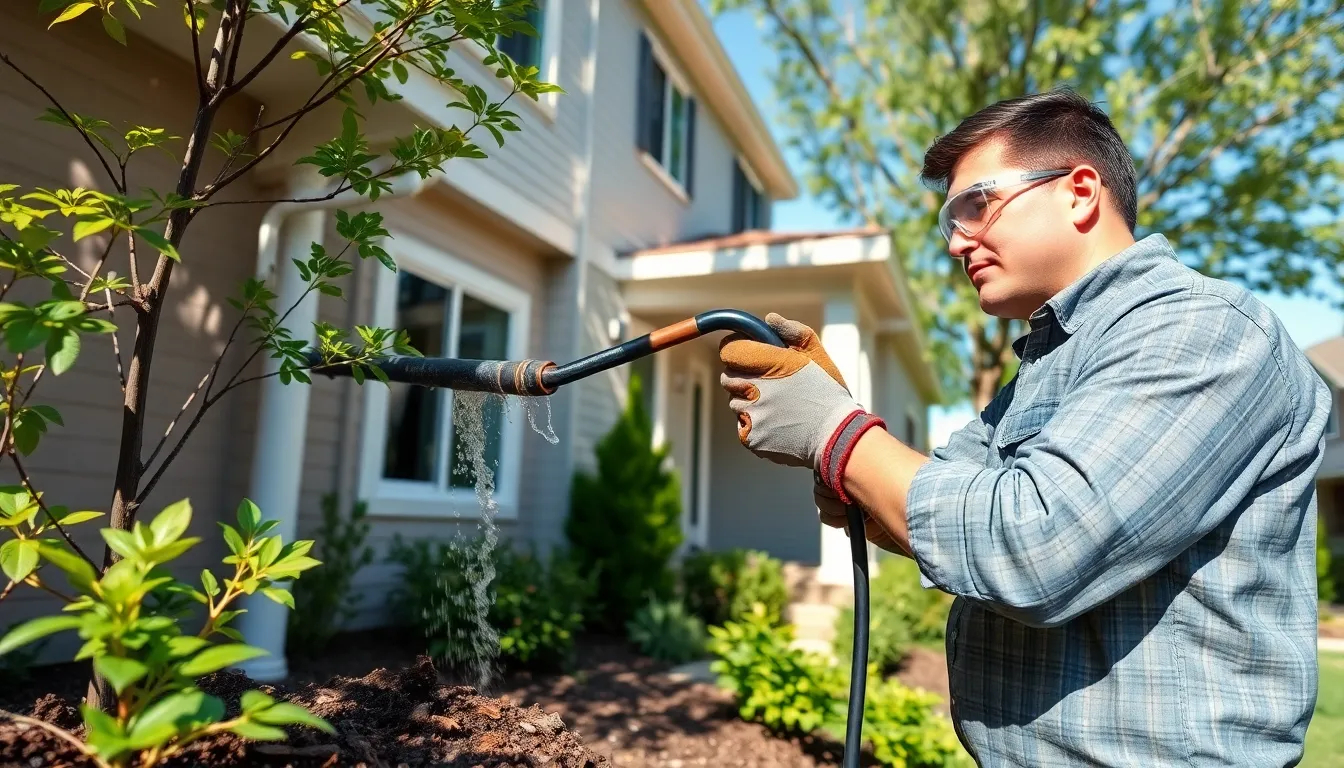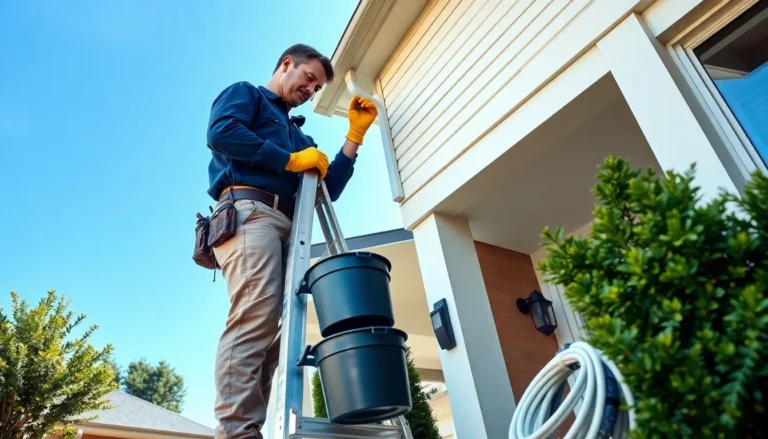Have you ever watched rain pour down your roof, only to see water pooling ominously around your foundation? It’s not the plot of a home improvement horror story: it’s the consequence of neglecting downspout cleaning. If the thought makes you shudder, don’t worry. With a bit of humor and a good dose of know-how, maintaining your downspouts can turn from a chore to a breeze. This comprehensive guide delves into the importance of downspout cleaning, offers handy tips, and ensures your home stays dry and happy. So grab your tools, put on your favorite playlist, and let’s jump into the world of downspouts.
Table of Contents
ToggleWhy Downspout Cleaning Is Essential

Downspouts play an unsung hero role in your home’s drainage system. When they function well, they direct rainfall away from the foundation, keeping basements dry and preventing structural damage. But, neglecting them can lead to a host of problems.
Common Issues Caused by Clogged Downspouts
Clogs are like uninvited guests at a party, annoying and damaging. When downspouts become blocked, water can overflow. This leads to:
- Foundation Damage: Water pooling around the foundation can cause cracks and even structural issues over time.
- Landscaping Issues: Overflowing water can erode soil or drown your prized garden.
- Mold Growth: Standing water can encourage mold and mildew, which are not only unsightly but can also pose health risks.
- Pest Problems: Stagnant water can become a breeding ground for mosquitoes and other pests.
Overall, regular cleaning practices can save homeowners from headaches and bigger repair bills down the line.
Signs You Need to Clean Your Downspouts
It’s not always easy to know when to grab your ladder and cleaning supplies. Here are some red flags that will signal it’s time for a downspout cleaning session:
- Water Overflowing at the Top: If water is gushing over the top of the downspout during heavy rain, it’s a clear sign it’s time to clean.
- Pooling Water: Notice any pools of water near the foundation? This could signal that the downspouts aren’t working properly.
- Debris Build-Up: A quick glance at the downspout will show you whether there’s debris, twigs, or leaves obstructing flow.
- Strange Noises: If downspouts are gurgling or making odd noises, it may indicate blockages.
Tools and Materials Needed for Downspout Cleaning
Tackling the task of cleaning your downspouts doesn’t have to be daunting. With the right tools, it can actually be quite simple. Here’s what you’ll need:
- Ladder: A stable ladder is essential for reaching the top of your downspouts.
- Bucket: Great for collecting debris that you’ll remove from the downspout.
- Garden Hose with a Nozzle: This can help flush out stubborn clogs.
- Gloves: Protect those hands while getting down to the nitty-gritty.
Step-by-Step Process for Cleaning Downspouts
Now, let’s jump into the cleaning process. Follow these steps for a thorough clean:
- Inspect: Start at the gutters and work your way down. Look for any visible blockages or debris.
- Remove Debris: Use gloves to pull out leaves and other gunk.
- Flush with Water: Using your hose, flush water through the downspout to check for flow.
- Check the Outlet: Make sure the water is discharging properly at the base of the downspout.
Safety Precautions to Take
Safety first. Always ensure your ladder is stable and, if you’re working on uneven ground, place wood or plastic under the base to keep it steady. And remember, if you’re uncomfortable climbing, it might be best to call in the pros.
Maintaining Clean Downspouts: Tips and Tricks
Once your downspouts are clean and flowing freely, it’s time to think about maintenance. Here are some tips to keep them in tip-top shape:
- Routine Checks: Set a schedule to check your downspouts at least once a season, or more often if you have many trees nearby.
- Install Screens: Using mesh screens can prevent leaves and larger debris from clogging the system.
- Clean Gutters Regularly: Keeping gutters clean will reduce the likelihood of debris entering your downspouts.






